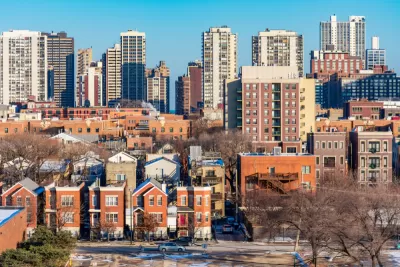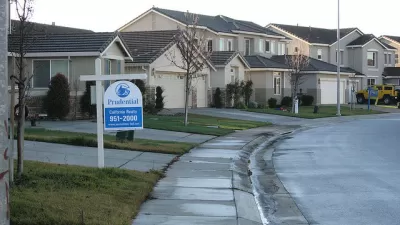A new study examines mortgage lending practices in racially homogenous neighborhoods for clues about how those neighborhoods differ from the aggregate, national market.

A new study, available online, examines the racial contours of the U.S. subprime lending boom, foreclosure crisis, and recovery surrounding the Great Recession.
"Existing studies reveal general lending patterns in these periods but fail to scrutinize racially homogeneous neighborhoods where outcomes often diverge from aggregate trends," writes author Tyler Haupert, a graduate student at Columbia University, in the abstract to differentiate the study from previous research.
The study uses data from 2005 and 2015, and finds a commonality to the pre-recession market and the post-recession market: "the gap between white borrowers’ comparatively high application approval rates and minority borrowers’ lower approval rates grows as the proportion of white residents in a target neighborhood increases."
The big takeaway: the racially homogenous neighborhoods function differently than the aggregated experience of the housing market.
The study is available in its entirety online, published by the Housing Policy Debate journal.
FULL STORY: Racial Patterns in Mortgage Lending Outcomes During and After the Subprime Boom

Alabama: Trump Terminates Settlements for Black Communities Harmed By Raw Sewage
Trump deemed the landmark civil rights agreement “illegal DEI and environmental justice policy.”

Planetizen Federal Action Tracker
A weekly monitor of how Trump’s orders and actions are impacting planners and planning in America.

Why Should We Subsidize Public Transportation?
Many public transit agencies face financial stress due to rising costs, declining fare revenue, and declining subsidies. Transit advocates must provide a strong business case for increasing public transit funding.

Understanding Road Diets
An explainer from Momentum highlights the advantages of reducing vehicle lanes in favor of more bike, transit, and pedestrian infrastructure.

New California Law Regulates Warehouse Pollution
A new law tightens building and emissions regulations for large distribution warehouses to mitigate air pollution and traffic in surrounding communities.

Phoenix Announces Opening Date for Light Rail Extension
The South Central extension will connect South Phoenix to downtown and other major hubs starting on June 7.
Urban Design for Planners 1: Software Tools
This six-course series explores essential urban design concepts using open source software and equips planners with the tools they need to participate fully in the urban design process.
Planning for Universal Design
Learn the tools for implementing Universal Design in planning regulations.
Caltrans
Smith Gee Studio
Institute for Housing and Urban Development Studies (IHS)
City of Grandview
Harvard GSD Executive Education
Toledo-Lucas County Plan Commissions
Salt Lake City
NYU Wagner Graduate School of Public Service





























